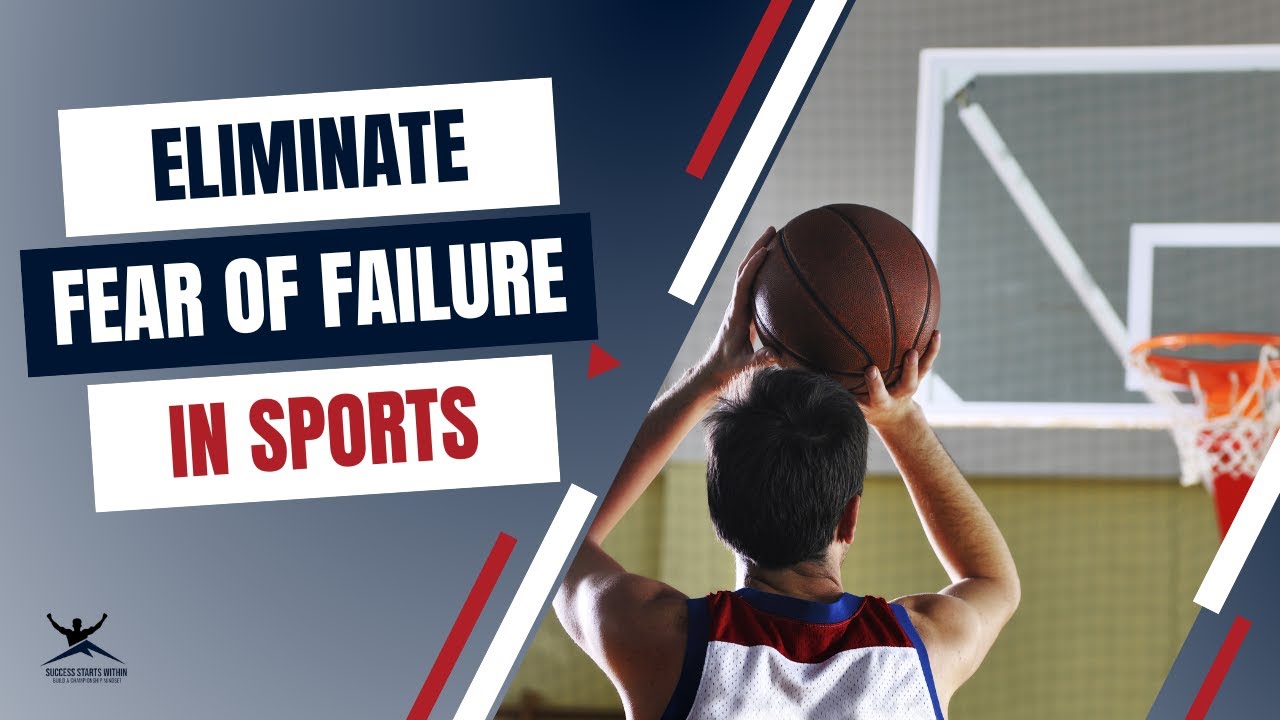In the world of sports, failure is often perceived as a setback that athletes strive to avoid. However, this mindset can hinder growth and development. This article explores how embracing failure can serve as a vital stepping stone toward achieving success. By understanding the value of failure, learning from prominent athletes, and implementing effective strategies, athletes can transform setbacks into opportunities for growth, resilience, and ultimately, future victories. This practical approach will help you navigate challenges more effectively, enhancing both your performance and personal development in sports and beyond.
In this article you will find:
Embracing Failure as a Stepping Stone to Success
In the world of sports, failure is often seen as a daunting specter that athletes strive to avoid. However, what if we reframed this narrative? What if failure could be viewed not as an endpoint but as a crucial stepping stone towards achieving greatness? Embracing failure is not just about accepting setbacks; it’s about leveraging those experiences to foster growth, resilience, and ultimately, success.
Understanding the Value of Failure
Failure in sports is inevitable. Even the most celebrated athletes encounter defeat, injuries, and setbacks. Yet, it is their response to these challenges that sets them apart. Embracing failure allows athletes to:
- Reflect on Performance: Analyzing what went wrong provides valuable insights that can be applied in future competitions.
- Build Resilience: Each failure teaches athletes how to cope with adversity, making them stronger and more determined.
- Enhance Skills: Mistakes often highlight areas needing improvement, prompting targeted training and skill development.
Lessons from Prominent Athletes
Many athletes have publicly shared their experiences with failure and how these moments fueled their success. For instance, basketball legend Michael Jordan famously stated, “I’ve missed more than 9,000 shots in my career. I’ve lost almost 300 games. Twenty-six times, I’ve been trusted to take the game-winning shot and missed. I’ve failed over and over and over again in my life. And that is why I’ve succeeded.”
This perspective illustrates that failure is a part of the journey to success. Athletes like Serena Williams and Tom Brady also embody this mindset, demonstrating how setbacks can serve as powerful motivators. By embracing failure, they have not only achieved remarkable success but have also inspired countless others to adopt a similar approach.
Strategies to Embrace Failure
To truly embrace failure as a stepping stone, athletes and aspiring individuals can implement several strategies:
- Set Realistic Goals: Establishing achievable goals can reduce the fear of failure. Aim for progress rather than perfection.
- Practice Self-Compassion: Treat yourself with kindness and understanding when facing setbacks. This approach fosters a healthier mindset.
- Learn Continuously: Focus on lessons learned from each failure. This commitment to growth can transform setbacks into opportunities.
The Psychological Impact of Embracing Failure
From a psychological standpoint, embracing failure can significantly impact an athlete’s mental health. It promotes a growth mindset, a term coined by psychologist Carol Dweck. Athletes with a growth mindset view challenges as opportunities to learn rather than threats to their self-worth. This shift in perspective can lead to greater motivation, increased effort, and ultimately, improved performance.
Research indicates that athletes who adopt a growth mindset are more likely to overcome adversity and achieve their goals. For more on this concept, explore Carol Dweck’s work on mindset psychology.
In conclusion, embracing failure is not merely about accepting setbacks; it is about recognizing their potential to propel us toward success. By reframing our perceptions of failure, learning from our experiences, and fostering resilience, we can transform obstacles into stepping stones on our path to greatness.
Lessons from Elite Athletes on Resilience
Elite athletes are often seen as paragons of success, but their journeys are paved with challenges and setbacks. The true essence of resilience lies not just in their victories, but in how they respond to adversity. By examining the experiences of these athletes, we can extract valuable lessons on resilience that can be applied to our own lives, whether in sports or beyond.
The Power of Mental Toughness
Mental toughness is a cornerstone of athletic resilience. Athletes like Serena Williams exemplify this trait. Despite facing injuries and personal challenges, Williams has consistently returned to the court with unmatched determination. Her ability to maintain focus and drive, even in the face of adversity, highlights the importance of cultivating a strong mental framework.
To develop mental toughness, athletes can:
- Set Clear Goals: Establishing specific, measurable, and attainable goals provides direction and motivation, making it easier to push through tough times.
- Practice Visualization: Envisioning success and positive outcomes can enhance confidence and reduce anxiety during high-pressure situations.
- Embrace Challenges: Instead of avoiding difficult situations, actively seek them out as opportunities for growth and learning.
Building a Support System
Another key lesson from elite athletes is the importance of a strong support system. Michael Phelps, the most decorated Olympian, credits his success not only to his hard work but also to the unwavering support of his coaches, teammates, and family. This network provided him with encouragement and constructive feedback throughout his career.
To build a supportive environment, consider the following:
- Surround Yourself with Positive Influences: Engage with individuals who inspire and motivate you, fostering a culture of positivity and encouragement.
- Seek Feedback: Constructive criticism from coaches or peers can provide insights that help refine performance and enhance resilience.
- Engage in Team Activities: Participating in team sports or group training can create a sense of camaraderie and shared purpose, strengthening bonds and resilience.
Learning from Setbacks
Elite athletes often view setbacks as valuable learning experiences. For example, Tom Brady, a seven-time Super Bowl champion, faced criticism and doubt early in his career. Instead of succumbing to the pressure, Brady used these challenges to fuel his growth, consistently improving his game.
To effectively learn from setbacks, athletes can:
- Reflect on Experiences: Take time to analyze what went wrong and identify specific areas for improvement. This reflection is crucial for personal development.
- Adopt a Growth Mindset: Embrace the idea that abilities and intelligence can be developed with effort and persistence. This mindset fosters resilience and adaptability.
- Stay Persistent: Continue to push forward despite failures. Resilience is built through consistent effort and determination over time.
Incorporating Resilience Techniques into Daily Life
Resilience isn’t just vital for athletes; it’s a necessary skill for everyone. The techniques used by elite athletes can be applied to everyday challenges, whether in professional settings or personal endeavors. For insights on cultivating resilience in various aspects of life, consider exploring resources like BookAuthority’s recommendations on resilience literature.
By learning from the resilience displayed by elite athletes, we can all cultivate a mindset that embraces challenges and turns setbacks into opportunities for growth. This approach not only enhances our performance in sports but also enriches our personal and professional lives.
Building a Growth Mindset Through Sports Challenges
In the realm of sports, challenges are not just obstacles; they are gateways to personal growth and development. Embracing these challenges can cultivate a growth mindset, a concept popularized by psychologist Carol Dweck. This mindset emphasizes the belief that abilities and intelligence can be developed through dedication and hard work. By understanding how to leverage sports challenges, athletes can transform their experiences into powerful learning opportunities.
Understanding the Growth Mindset
A growth mindset contrasts sharply with a fixed mindset, where individuals believe their talents are static and unchangeable. Athletes with a growth mindset view challenges as opportunities to improve rather than threats to their self-esteem. This perspective is crucial in sports, where performance fluctuates and setbacks are common.
Key characteristics of a growth mindset include:
- Embracing Challenges: Athletes actively seek out difficult situations, understanding that they are essential for growth.
- Persistence in the Face of Setbacks: Rather than giving up, they maintain effort and dedication, viewing failures as learning experiences.
- Valuing Effort: They recognize that effort is a pathway to mastery, and hard work is crucial for improvement.
Sports Challenges as Catalysts for Growth
Sports inherently involve challenges, from intense competition to personal performance plateaus. Here’s how these challenges can foster a growth mindset:
- Adapting to Adversity: Athletes learn to adapt their strategies and techniques in response to challenges, enhancing their problem-solving skills.
- Building Confidence: Overcoming obstacles boosts self-confidence, reinforcing the belief that they can tackle future challenges.
- Fostering Resilience: Regularly facing and overcoming challenges instills resilience, enabling athletes to bounce back from setbacks more effectively.
Practical Strategies for Developing a Growth Mindset
To cultivate a growth mindset through sports challenges, athletes can implement the following strategies:
- Set Incremental Goals: Establish small, achievable goals that lead to larger objectives. This approach makes challenges feel more manageable and provides motivation through tangible progress.
- Reflect on Experiences: After competitions or training sessions, take time to reflect on what went well and what can be improved. This practice helps in recognizing growth areas and reinforces the learning process.
- Seek Feedback: Actively solicit feedback from coaches and peers. Constructive criticism can provide valuable insights and highlight areas for development.
Real-Life Examples of Growth Mindset in Sports
Numerous elite athletes exemplify the power of a growth mindset in overcoming challenges. For instance, Simone Biles, the renowned gymnast, faced immense pressure during the Tokyo Olympics. Despite the challenges, she prioritized her mental health, demonstrating the importance of self-awareness and adaptation. Her decision to withdraw from certain events to focus on her well-being highlights how understanding one’s limits can lead to long-term success.
Similarly, LeBron James has often spoken about his commitment to continuous improvement. He invests significant time in training and skill development, always looking for ways to enhance his game, regardless of his established success.
Resources for Further Learning
For those interested in deepening their understanding of the growth mindset and its application in sports, consider exploring resources like BookAuthority’s collection of resilience books. These materials can provide further insights into how to cultivate a growth mindset and effectively tackle challenges.
By embracing the challenges presented in sports, athletes can build a robust growth mindset that not only enhances their performance but also enriches their personal development. This mindset serves as a powerful tool for navigating life’s challenges, fostering resilience and continuous improvement.
Strategies for Turning Setbacks into Future Victories
Setbacks in sports can be disheartening, but they also offer unique opportunities for growth and transformation. The ability to turn failures into victories is a skill that can be developed through intentional strategies. This section will explore effective methods for harnessing the lessons learned from setbacks to pave the way for future success.
Embrace a Reflective Mindset
One of the most powerful strategies for turning setbacks into victories is to cultivate a reflective mindset. This involves taking the time to analyze what went wrong and understanding the factors that contributed to the failure.
- Journaling: Keeping a journal can help athletes articulate their thoughts and feelings about a setback. Writing down experiences allows for deeper reflection and can uncover patterns or triggers that need addressing.
- Post-Event Analysis: After competitions, conduct a thorough review of performance. Identify strengths and weaknesses, and pinpoint specific areas for improvement.
- Seeking External Perspectives: Sometimes, an outside viewpoint can provide valuable insights. Discuss setbacks with coaches, teammates, or mentors who can offer constructive feedback.
Setting SMART Goals
Once the reflections on a setback have been made, it’s crucial to set SMART goals (Specific, Measurable, Achievable, Relevant, Time-bound). This structured approach to goal-setting helps athletes focus on actionable steps that lead to improvement.
- Specific: Clearly define what you want to achieve. Instead of saying, “I want to be better,” specify “I want to improve my sprint time by 0.5 seconds.”
- Measurable: Establish criteria for tracking progress. For example, measure performance improvements through timed trials.
- Achievable: Set realistic goals that challenge you but are still attainable, avoiding overwhelming pressure.
- Relevant: Ensure the goals align with overall aspirations and are meaningful to the athlete’s journey.
- Time-bound: Assign a deadline to goals to instill a sense of urgency and commitment.
Developing a Resilience Toolkit
Creating a personal resilience toolkit can equip athletes with strategies to deal with setbacks more effectively. This toolkit may include:
- Stress Management Techniques: Practices such as meditation, deep breathing, or yoga can help manage stress and maintain focus during challenging times.
- Positive Affirmations: Repeating positive affirmations can reinforce self-belief and counter negative thoughts that may arise after a setback.
- Visualization: Visualizing success can enhance confidence and prepare athletes mentally for future challenges.
Building a Support Network
A strong support network can significantly influence an athlete’s ability to bounce back from setbacks. Engaging with coaches, teammates, friends, and family can provide emotional support and encouragement.
- Regular Check-Ins: Schedule regular discussions with coaches and mentors to share progress and seek advice on overcoming challenges.
- Peer Support Groups: Connecting with fellow athletes who face similar challenges can foster camaraderie and shared learning experiences.
- Family Involvement: Encouragement from family members can provide a sense of stability and motivation during tough times.
Learning from Inspirational Stories
Many athletes have successfully turned setbacks into victories by applying these strategies. For instance, Rafael Nadal, who has faced numerous injuries throughout his career, exemplifies resilience. Each time he returned from injury, he used his experiences to refine his game, ultimately achieving remarkable success on the tennis court.
For more examples of resilience in sports, check out inspiring resources such as BookAuthority’s list of resilience literature, which offers insights into overcoming adversity.
By implementing these strategies, athletes can transform setbacks into powerful opportunities for growth, setting the stage for future victories. Embracing challenges with a proactive mindset can turn failures into stepping stones on the path to success. In sports, failure is not merely an endpoint but a vital stepping stone toward success. Embracing failure allows athletes to reflect on their performance, build resilience, and enhance their skills. By adopting a growth mindset, they can view challenges as opportunities for improvement, leading to greater motivation and adaptability. Key strategies include setting realistic goals, practicing self-compassion, and continuously learning from setbacks.
To effectively turn setbacks into future victories, athletes should cultivate a reflective mindset through journaling and post-event analysis, set SMART goals to guide their progress, and develop a personal resilience toolkit that includes stress management techniques and positive affirmations. Building a supportive network of coaches, teammates, and family is crucial for emotional support, while learning from inspirational stories of resilience can further motivate athletes to persevere through challenges.




